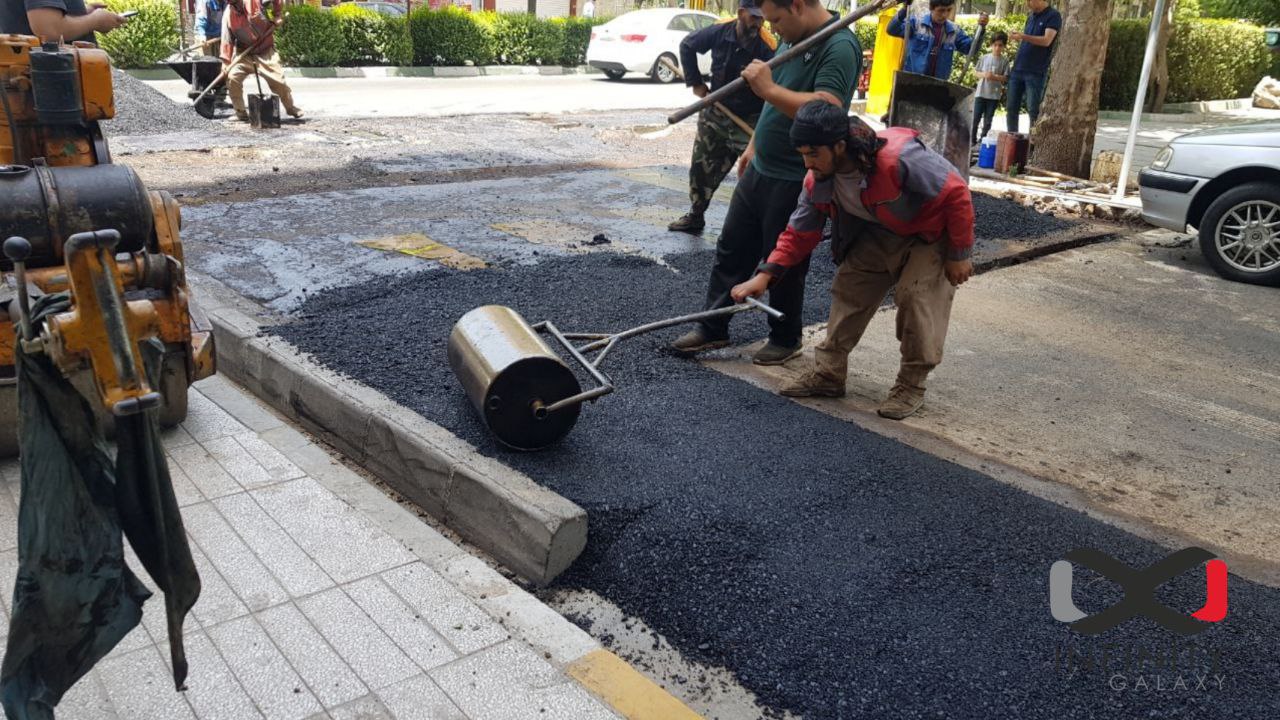Change Your Residential property's Landscape with Hot Mix Asphalt Paving Quality
Change Your Residential property's Landscape with Hot Mix Asphalt Paving Quality
Blog Article
Opening the Keys of Warm Mix Asphalt Modern Technology
Exploring the depths of hot mix asphalt technology uncovers a world where precise formulations and meticulous processes converge to form our roadways and framework. The combination of fillers, aggregates, and binders isn't merely a construction job yet a critical orchestration of durability and performance. As we peer right into the intricate dance of parts, a tapestry of strength and sustainability unravels. What exists underneath this surface of asphaltic mastery, and what keys wait to be revealed in the realm of paving developments?
Value of Warm Mix Asphalt
Hot Mix Asphalt plays an important duty in contemporary framework development as a result of its resilience and cost-effectiveness. As one of the most typically made use of paving material for roadways, highways, and auto parking lots, Warm Mix Asphalt supplies a variety of advantages that contribute to its significance in building and construction projects. One crucial benefit is its capability to stand up to rush hour lots and severe weather, offering a dependable and durable surface for transportation networks. Furthermore, Warm Mix Asphalt is cost-efficient in both first construction and long-term maintenance, making it a preferred option for several framework projects.
The resilience of Hot Mix Asphalt stems from its make-up, which includes accumulations, binder, and filler materials that are meticulously chosen and mixed to fulfill details efficiency needs. On the whole, the relevance of Hot Mix Asphalt in infrastructure growth can not be understated, as it proceeds to be a foundation of modern-day building practices.
Parts of Asphalt Mixes
The composition of asphalt blends contains meticulously selected accumulations, binder, and filler materials that are critical for accomplishing particular efficiency requirements. Accumulations are the key element of asphalt blends, providing stamina and security. These aggregates can be natural, such as gravel or crushed rock, or artificial, like recycled materials from old sidewalks. The binder, typically bitumen or asphalt concrete, holds the aggregates together and offers versatility and resilience to the mix. The option of the binder is crucial as it directly affects the mix's efficiency in different climate condition. Fillers, such as moisturized lime or Rose city concrete, are used to improve the mix's workability and aging resistance. Angled Parking.
The mix and percentage of these parts play a substantial duty in establishing the top quality and performance of the asphalt mix. Engineers thoroughly develop the mix to meet particular demands, considering factors like traffic volume, environment problems, and sidewalk life expectancy. Appropriate choice and balancing of accumulations, binder, and fillers are essential for developing sturdy, durable asphalt sidewalks.
Mixing and Production Techniques

When the aggregates are chosen, the binder, often asphalt cement, is included in bind the materials together. The binder's quality and quantity significantly impact the mix's resistance, flexibility, and strength to ecological variables. In addition, fillers like moisturized lime or Rose city concrete might Source be integrated to enhance specific characteristics of the asphalt mix, such as its workability or moisture resistance.
Throughout production, the aggregates and binder are warmed, commonly between 250-325 ° F(121-163 ° C ), to facilitate blending and make sure appropriate covering of the aggregates. The blending process must be thorough to attain a homogeneous mix that promotes the desired efficiency qualities of the asphalt. Numerous methods, such as batch blending or drum mixing, are used to accomplish top quality and consistent asphalt blends for construction tasks.
Elements Affecting Asphalt Efficiency
Aspects affecting asphalt performance include an array of variables that influence the sturdiness, longevity, and overall high quality of asphalt sidewalks. One vital factor is the high quality of products made use of in the asphalt mix.
:max_bytes(150000):strip_icc()/asphalt-worker-134249388-58cdf96f5f9b581d723f2f33.jpg)
Design considerations, such as pavement thickness and drain, are necessary in ensuring the long-term performance of the asphalt pavement. By thoroughly considering these specialists, engineers and factors can maximize asphalt efficiency and boost the solution life of sidewalks.
Sustainable Practices in Asphalt Technology

Furthermore, the growth of warm-mix asphalt (WMA) modern technologies has actually obtained grip in current years. WMA permits for the manufacturing and placement of asphalt blends at lower temperatures contrasted to traditional hot-mix asphalt, causing reduced energy usage and greenhouse gas emissions. The use of porous asphalt blends can aid alleviate stormwater drainage issues by allowing water to infiltrate through the pavement and right into the ground, promoting natural water purification and recharge procedures. By carrying out these sustainable practices, the asphalt market can add to constructing a more eco pleasant and resistant infrastructure network.
Verdict
To conclude, hot mix asphalt modern technology plays an important duty in contemporary facilities development due to its toughness and cost-effectiveness. By very carefully balancing components, using appropriate blending strategies, and taking into consideration numerous elements, engineers can develop top quality asphalt mixes that stand up to rush hour tons and severe climate condition. Welcoming lasting methods, such as utilizing recycled products and warm-mix innovations, further boosts the environmental kindness of asphalt technology.
Blending and production strategies in warm mix asphalt innovation involve the specific combination and processing of aggregates, binder, and fillers to produce a long lasting and high-performance asphalt mix.Elements affecting asphalt performance encompass an array of variables that impact the resilience, long life, and overall top quality of asphalt sidewalks. Sustainable practices in asphalt modern technology incorporate numerous efforts intended at decreasing the ecological influence of asphalt production and paving procedures. By incorporating reclaimed asphalt sidewalk (RAP) and recycled asphalt shingles (RAS) into brand-new asphalt mixes, the industry can substantially reduce the intake of raw products and power, while also lowering landfill waste.
WMA permits for the manufacturing and placement of asphalt mixes at reduced temperature levels contrasted to typical hot-mix asphalt, resulting in decreased power usage and greenhouse gas exhausts.
Report this page